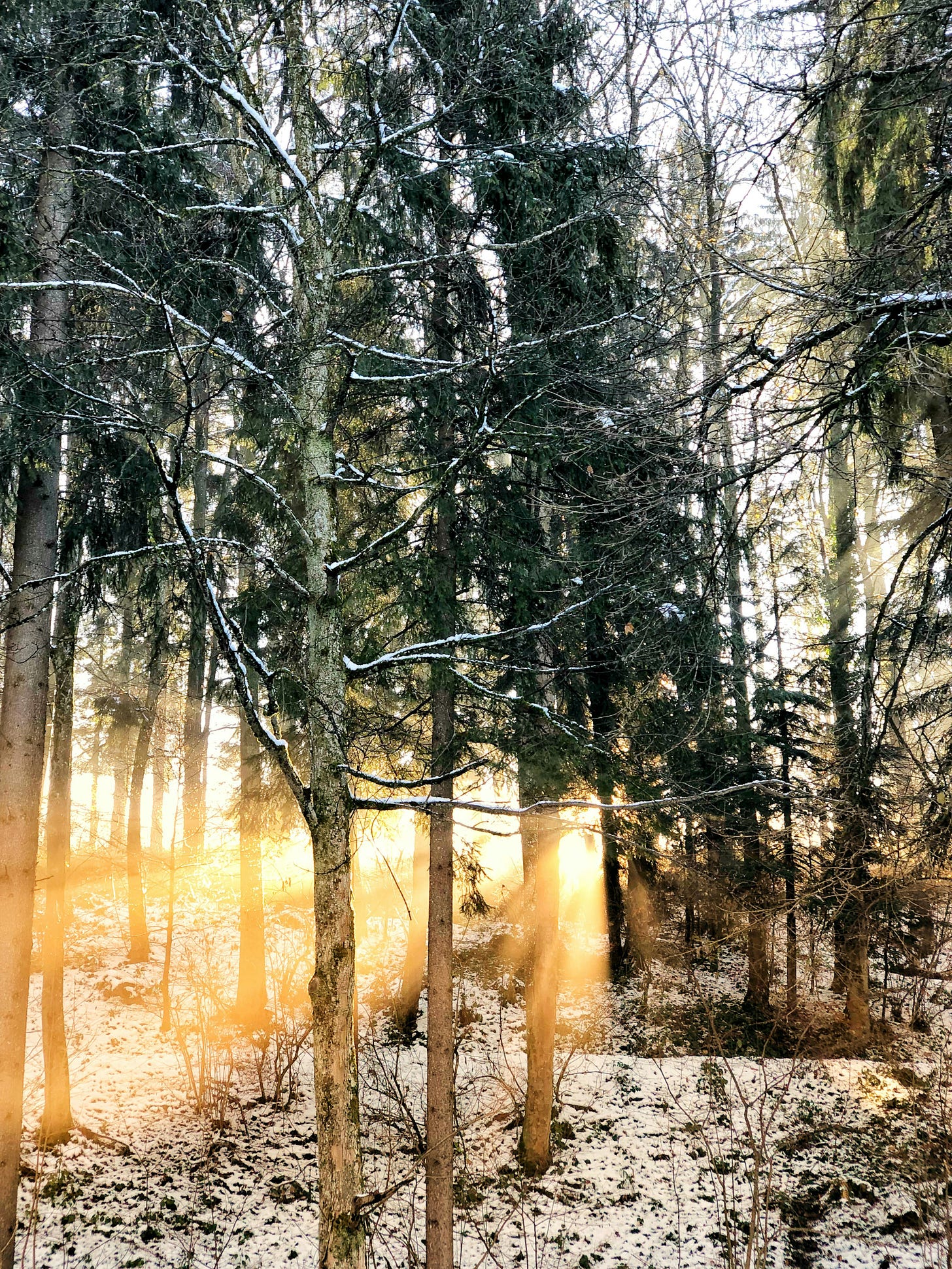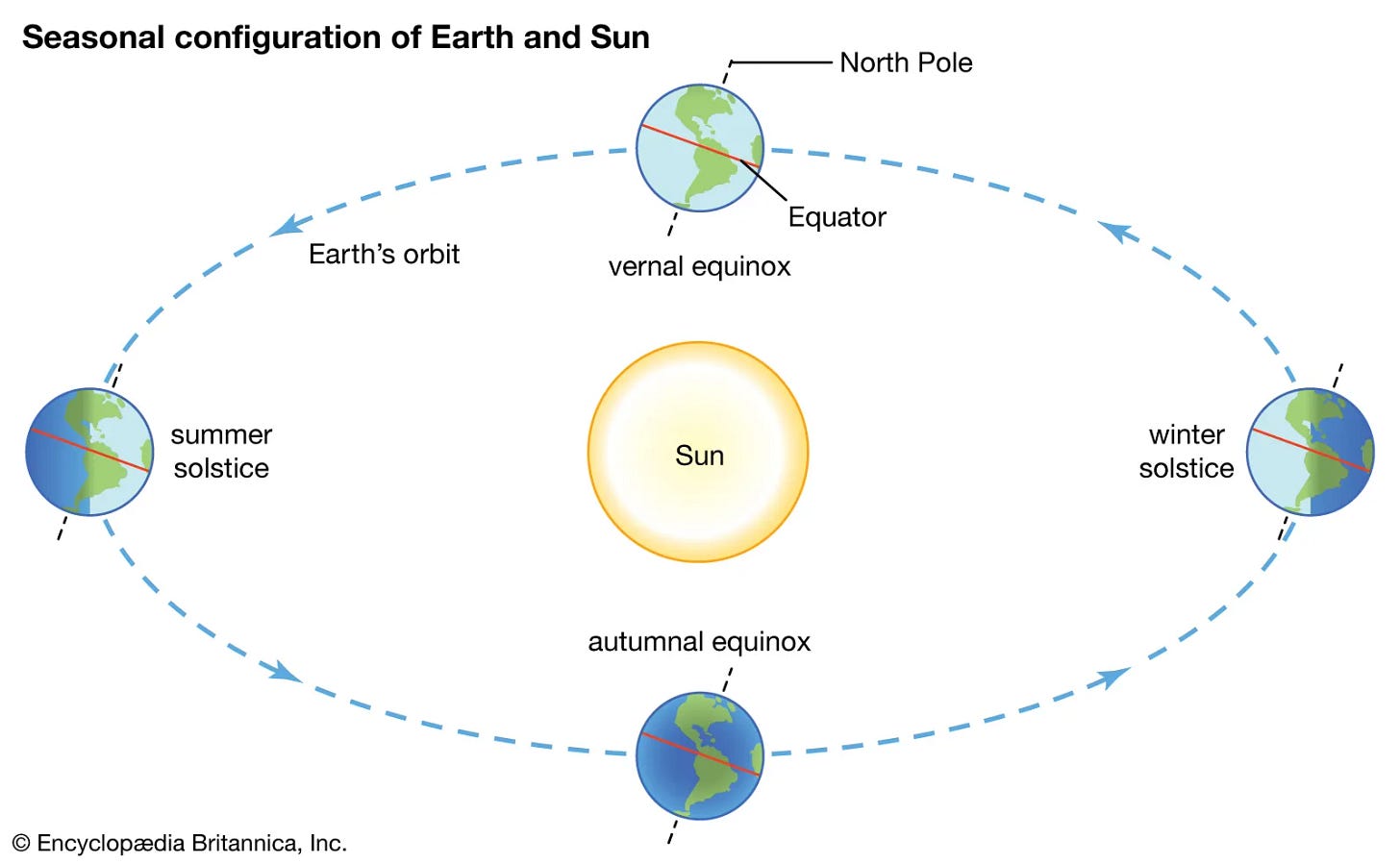Celebrating the Winter Solstice
Welcome to Just Write, Robyn, a reader supported Substack where I explore my journey as a 40-something in the south-east of Melbourne navigating career change, chronic illness, neurodivergence and perimenopause. If you find my letters of value, please consider subscribing or sharing.

Solstice blessings, everyone! Whether you’re in the northern or southern hemisphere, today is the solstice, the longest or shortest day of the year, depending on which hemisphere you reside in. Here in the southern hemisphere it is the Winter Solstice – the shortest day of the year, and, some say, the beginning of the deep cold that sees us through the rest of winter.
Throughout history different civilisations and societies have observed and celebrated the solstices. In Australia, it’s not until recently that we’ve seen an interest recognising the Winter Solstice in particular. Growing up, I remember Mum commenting on the occurrence of the longest and shortest days as they occurred, so I’ve always had an awareness of those changes in the seasons. In the last decade or so, as I’ve explored different parts of my spirituality and have connected more with the natural world around us, I’ve begun to learn more about ancient celebrations, traditions and observances of the solstices and incorporate some of them into my spiritual practice.
Tilts and orbits
The Earth’s axis is on a bit of a tilt, which means at the moment the southern most part of the planet is the furthest it can be from the sun, and the northern most part is the closest it can be. And depending on how far south or north you go, there is less or more daylight. At the south pole they experience 6 months of ‘nighttime’ with the sun just approaching the horizon for a few hours of twilight each day. At the north pole they currently have permanent ‘daytime’ with the sun barely dipping below the horizon to provide some dusk lowlight.

Almost deep winter
Here in Australia, while it seems like it couldn’t get any colder this week (despite the last couple of days being gloriously sunny in Melbourne) we don’t experience the coldest part of winter for a few weeks yet. According to the Bureau of Meteorology the high heat capacity of the oceans around Australia helps keep the temperatures a bit warmer and we generally get our coldest week in July. But it’s cold enough, I reckon, and celebrating the Winter Solstice is as much about the light as it is the cold.
Ancient Rome – Saturnalia
One of the winter solstice celebrations of old was Saturnalia in Ancient Rome, the festival of Saturn, the god of agriculture and time. It recognised the end of the planting season, and during the celebrations the social order was inverted, with gambling permitted and masters seen waiting on their servants or slaves. As with most festivals, feasts were a central part of Saturnalia celebrations, with a more relaxed dress code and social hierarchies blurred with everyone dining together. There was also an emphasis on light, with candles and lamps, to recognise the sun’s triumph over the darkness, a theme that resonated with Saturn’s association of renewal and rejuvenation.
Life goes through cycles of making and breaking. The winter solstice reminds us of this balance. It teaches us to learn from our past.
Sacred Path Finder
Scandinavia – Yule
Yule was celebrated by the Germanic peoples such as Vikings for hundreds of years, and like Saturnalia involved food, fun and light in the form of candles and bonfires. Depending on the region, it may include the worship of gods such as Odin for Vikings or the Horned God for Wiccans, or the pagan celebration of the battle of the Holly King and the Oak King or may not include deities at all. Many of the Yule traditions are ones we recognise at Christmas still today – evergreen wreaths and a tree, lots of lights, and lots of good winter foods.
Quiet Yule celebrations
This year Yule is a quiet celebration for me. There is a lot happening around Victoria to celebrate winter solstice, including Cape Clear in Western Victoria they have made a Viking Longship that will be set alight tonight as the community comes together to celebrate, while in East Gippsland in Eastern Victoria the Winter Festival kicks off today and includes markets, feasts and lightshows. But due to my health being what it is, Yule this year is being spent keeping warm and snug at home. I’m spending time with the eldest niece and introducing her to some quiet Yule observances – wrapped in blankets on the couch watching tv or reading, lighting some candles to call the light to us, and roasting some chicken and winter vegetable for a small feast together tonight. The solstice is also a time to reflect. Historically, the quiet and slower time of winter was a time of reflection and planning. Our modern society demands productivity throughout the year, without time to slow down, reflect and recover. The Winter Solstice is a reminder to slow down and embrace the quiet that nature shows us is necessary in the natural world. It is good time for journalling, recapping the first half of the year, and planning ahead for the second.
Wherever you are, in the northern or southern hemisphere, I hope you’re enjoying the solstice in your region. Do you have plans for the solstice? If you do celebrate, what does that look like for you?
Have a great week friends.
Love, Robyn.
If you’re interested in reading more about Winter Solstice traditions I found these sites very interesting:
Solstices and Equinoxes - Australian BoM
Viking Longship in Cape Clear and East Gippsland Winter Festival



